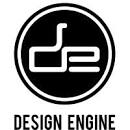This Maya training introduction to 3D modeling utilizing Maya is for conceptual modeling using various polygon, sub’D, and NURBS techniques to import into engineering tools such as SolidWorks or Pro/Engineer Wildfire

Maya 3D NURBS is for industrial designers who have specific needs with respect to product design.
This Maya training introduction to 3D modeling utilizing Maya is for conceptual modeling using various polygon, sub’D, and NURBS techniques to import into engineering tools such as SolidWorks or Pro/Engineer Wildfire.
Learn the basics of modeling and shading from a product designer’s perspective.
Not Covered: This class has been designed for product designers looking to learn Maya modeling at a high level in a short time. We do not discuss in this workshop how to animate objects or how to keyframe for animation.
Nor the use of dynamics and to create fog, clouds with lighting, fire and fireworks and many other awesome special effects. Nor the use of Maya’s MEL programming language to build simple functions and custom user interface controls.
This class does not go into great depth in the discussion of the hypershade and texturing unless there is consensus within the class.
Topics
Establish a strong foundation in Maya to build on as you learn.
Learn the Maya interface: Modeling, and Rendering.
Create primitives in NURBS, Polygons, and Sub’D surfacing.
Model out of spheres, cubes, cylinders, cones, planes, circles and squares.
Learn how to manipulate vertices, faces, edges, and Sub’D components.
Learn with hands on examples the basics of Polygon and Subdivision surface modeling using Poly Proxy Mode.
Model using precise dimensions or free-form modeling all modeling tools such as Sculpt, Offset, Extrude, Duplicate, etc.
Learn how to model using lattices and other deformers.
Learn how to convert NURBSs to Polygons, Sub’Ds, or Bezier for downstream engineering formats such as IGES and STEP.
Learn parenting and grouping by using the Hypergraph.
Learn how to create shadows and reflections for the right kind of atmosphere to a scene.
Learn object shading and texturing using Hypershade.
Learn how to optimize rendering times for efficiency.
Learn how to create proper shadowing and render passes for compositing.
Prerequisites
None required
Discussion
Discuss proving form and review techniques for ideation.
Discuss strengths and weaknesses of polygonal and boundary modeling in Maya to other high-end industry standard surfacing software.
Discuss standard modeling techniques with respect to industry standards.
Discuss various editors and the layout of Maya.
Utilize the rendering techniques Maya has to offer.
Discuss optimizing quality with respect to render times and troubleshooting common rendering problems.
Learn how to properly tessellate NURBS surfaces for smooth anti-aliased renders.
Learn how to setup proper 3 point studio lighting to show off the product true form.
Goals
Learn curve creation and NURBS modeling.
Learn modification of NURBS surfaces and curves.
Understand continuity issues with surfaces.
Learn polygon modeling and relation to NURBS and Sub’Ds.
Understand downstream issues with engineering.
Learn rendering shaders for various surface effects.
Learn lighting and rendering with Mental Ray and Maya.
Design Engine’s mission through our vaulted training is to enhance communication between training participants, designers, and engineers, enabling them to effectively communicate 3D CAD designs.
By fostering collaborative relationships, encouraging problem-solving, and promoting innovation, we empower teams to work smarter and not harder.
Unlike other training programs, we don’t just teach software menu clicks, or read to you from a book. Instead, our expert instructors challenge you to think creatively and through examples help your teams develop a workflow that allows for quick and effective changes to be made to models with confidence.
As both product designers and engineers, we are well-equipped to take your product ideas from ideation through engineering, prototyping, production, and ultimately thru to retail.
Design engine maintains strong relationships with US and overseas manufacturers and US retail buyers. Like a smart puzzle Design engine is prepared to assist product organizations in one or all product development phases.
Design Engine has been a world leader in delivering high-impact training courses for 3D CAD professionals, industrial designers, mechanical engineers, drafters, mechanics, and game designers.
As pioneers of robust modeling, top-down design, and other exciting training techniques, our team has successfully trained thousands of engineers and designers from companies including Bissell, Caterpillar, Ingersoll Rand, GE Medical, US Army, US Air Force, Newell Brands, Stanley Black & Decker, Harley-Davidson.
Here at Design Engine, we are incredibly passionate about learning. We believe that good design should transcend the software, so we focus on fundamental design & 3D modeling skills.
We help designers and engineers adopt a robust, resilient modeling workflow and challenge teams to approach problems with new perspectives that facilitate learning. Read testimonials from those who have trained in the past.
© 2025 coursetakers.com All Rights Reserved. Terms and Conditions of use | Privacy Policy